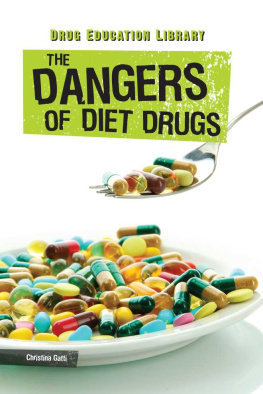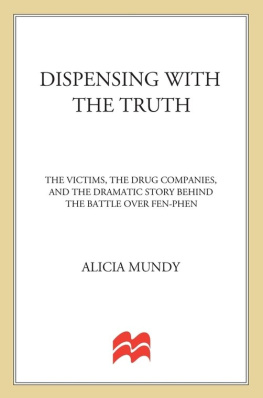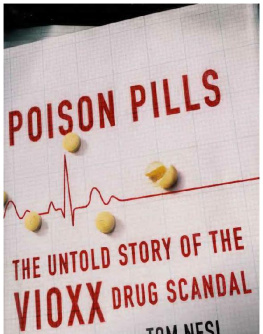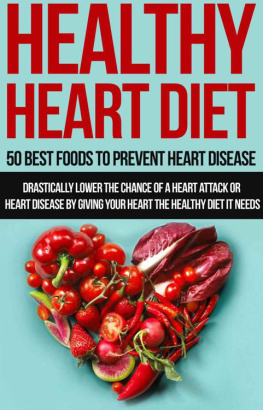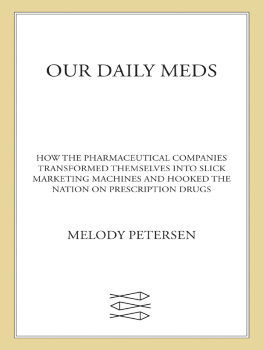Fat Chance
Fat Chance
DIET MANIA, GREED, AND THE INFAMOUS FEN-PHEN SWINDLE
RICK CHRISTMAN

Due to variations in the technical specifications of different electronic reading devices, some elements of this ebook may not appear as they do in the print edition. Readers are encouraged to experiment with user settings for optimum results.
Published by South Limestone
An imprint of the University Press of Kentucky
Copyright 2021 by The University Press of Kentucky
All rights reserved.
Editorial and Sales Offices: The University Press of Kentucky
663 South Limestone Street, Lexington, Kentucky 40508-4008
www.kentuckypress.com
Library of Congress Cataloging-in-Publication Data
Names: Christman, Rick, author.
Title: Fat chance : diet mania, greed, and the infamous fen-phen swindle / Rick Christman.
Description: Lexington : South Limestone, 2021. | Includes index.
Identifiers: LCCN 2020032963 | ISBN 9781949669305 (hardcover) | ISBN 9781949669312 (pdf) | ISBN 9781949669329 (epub)
Subjects: LCSH: Weight loss. | Appetite depressants. | Fenfluramine. | Phentermine. | Products liabilityDrugsUnited States. | Weight loss preparations industryLaw and legislationUnited States.
Classification: LCC RM222.2 .C4844 2021 | DDC 613.2dc23
LC record available at https://lccn.loc.gov/2020032963
This book is printed on acid-free paper meeting the requirements of the American National Standard for Permanence in Paper for Printed Library Materials.

Manufactured in the United States of America.
This book is dedicated to my wife, Lindy Karns, who consented to its publication despite her better judgment.
Contents
Preface and Acknowledgments
THIS BOOK IS ESSENTIALLY written in two parts. The first four chapters deal with the development, marketing, and demise of the diet drugs fen-phen (fenfluramine-phentermine) and Redux (dexfenfluramine). The remaining chapters cover in detail a bizarre, Kentucky-based class-action lawsuit against the manufacturer of these drugs. Those most interested in the legal aspects of the story may prefer to skip directly to chapter 5. Any reader who wishes to get right into the thick of the book may dispense with the introduction altogether.
Although I labored to make this book as readable as possible, it is by necessity a complicated story. Readers are urged to consult the timelines section at the end of this book, which will be helpful in that respect.
As the book developed, an underlying subtext emerged as to the openly cavalier ethical attitudes seemingly pervasive throughout the legal industry, including law schools, practicing attorneys, and judges. I will let the facts speak for themselves with regard to my opinion.
During my research I discovered evidence of malfeasance that heretofore had not been published. I have been careful not to present the evidence as conclusive, but rather to allow readers to make their own judgments. This book has been vetted by an attorney who specializes in media law specifically for that purpose.
I am not an attorney and I relied on the assistance of University of Kentucky professor of law Bill Fortune on at least one occasion, who helped me to better understand the rules of legal procedure.
Although I have no personal connection to the story, I find it fascinating and deserving of being told. I hope the reader will agree.
The author wishes to thank the following, who made this book possible: Patrick ODowd, Gary Matthews (for inspiration), Mike Cox, John Paine, Anthony Chiffolo, Bill Fortune, Melbourne Mills, Ila McEntire, B. M., B. K., D. D., and L. F.
Introduction
IF MONEY CAN BUY HAPPINESS, how much is enough? A 2010 Princeton University study of the relationship between money and the sense of well-being found that an annual household income of $75,000 is the satisfaction ceiling. The researchers determined that incomes above that level provide little to no appreciable increase in happiness. Yet most people persist in the belief that their discontent can be healed with the medicinal properties of cash. When this remedy fails, it is typically blamed on an insufficient dosage.
This book describes a collection of real-life characters who were so addicted to wealth that they needed huge fixes of other peoples money to maintain their states of euphoric indulgence. Coincidently, their income sources were related to actual pharmaceuticals.
During the early 1990s, the breakthrough diet drugs fen-phen (fenfluramine-phentermine) and Redux (dexfenfluramine) achieved tremendous popularity. Whats not to like about a pill that makes losing weight effortless? But when medical researchers became convinced that the drugs caused heart valve disease, the hopes of the overweight and obese were dashed, along with the potential fortunes of the drugmaker. In addition to the manufacturer,
Fen-phena chemical cocktail that greatly depressed appetitewas discovered by chance, marketed with hyperbole, and prescribed to millions. Redux, a close derivative of fen-phen, was made by the same pharmaceutical giant: American Home Products. Redux was developed as a backstop to one of the components of fen-phen, as the patents for each had lapsed.
The tortuous journey taken to obtain US Food and Drug Administration (FDA) approval of Redux is just one example of the overly cozy relationships among science, money, and politics. In the case of Redux, American Home Products orchestrated the razor-thin vote by the medical panel necessary to obtain quick FDA approval of the drug. It enlisted the help of the majordomo of several Republican White Houses, General Alexander Haig, to seal the deal and also received support from Senator Ted Kennedy. In Kentucky, which served as the setting for much of the drama in this tale, intense lobbying efforts and an active fund-raiser for the state Democratic Party paved the way for the medical review panels removal of the time limitation for the prescription of fen-phen.
The massive popularity of fen-phen and Redux was the result of the convergence of two truths: the centuries-old antipathy toward those who are overweight, and the contemporary assumption that obesity is a serious health crisis. Without question, the nations craze for fen-phen and Redux was the wildest in Kentuckynot only because Kentucky had an overabundance of people categorized as overweight but also, and more significantly, because it was surrounded by states that tightly restricted or outright banned the sale of these drugs.
Attempts by the pharmaceutical industry (aka Big Pharma) to cash in big-time have hardly been limited to diet drugs. At its peak in 2012, more than 50 million prescriptions for OxyContin (oxycodone) were written in the United States. Kentuckians were especially fond of this inducer of euphoria. In Clay County, Kentucky, population 21,000, more than 617,000 oxycodone tablets and 2.2 million hydrocodone pills (oxycodones first cousin) were sold in a twelve-month periodmore than ten tablets per month for every man, woman, and child.
According to Kentucky Health News, In 2014 and 2015 opioid manufacturers paid hundreds of doctors who prescribed particularly large amounts of opioids six-figure sums, and thousands more than $25,000. Dr. Andrew Kolodny, a senior scientist at the Institute for Behavioral Health at Brandeis University, commented, It seems like doctors being bribed to sell narcotics. In March 2018 a group of rural health care clinics in Kentucky filed a lawsuit against more than twenty opioid manufacturers and distributors for creating and engineering an epidemic of drug abusers. In one case, the drug company had provided literature to physicians that described the addictive qualities of opioids as a myth.



